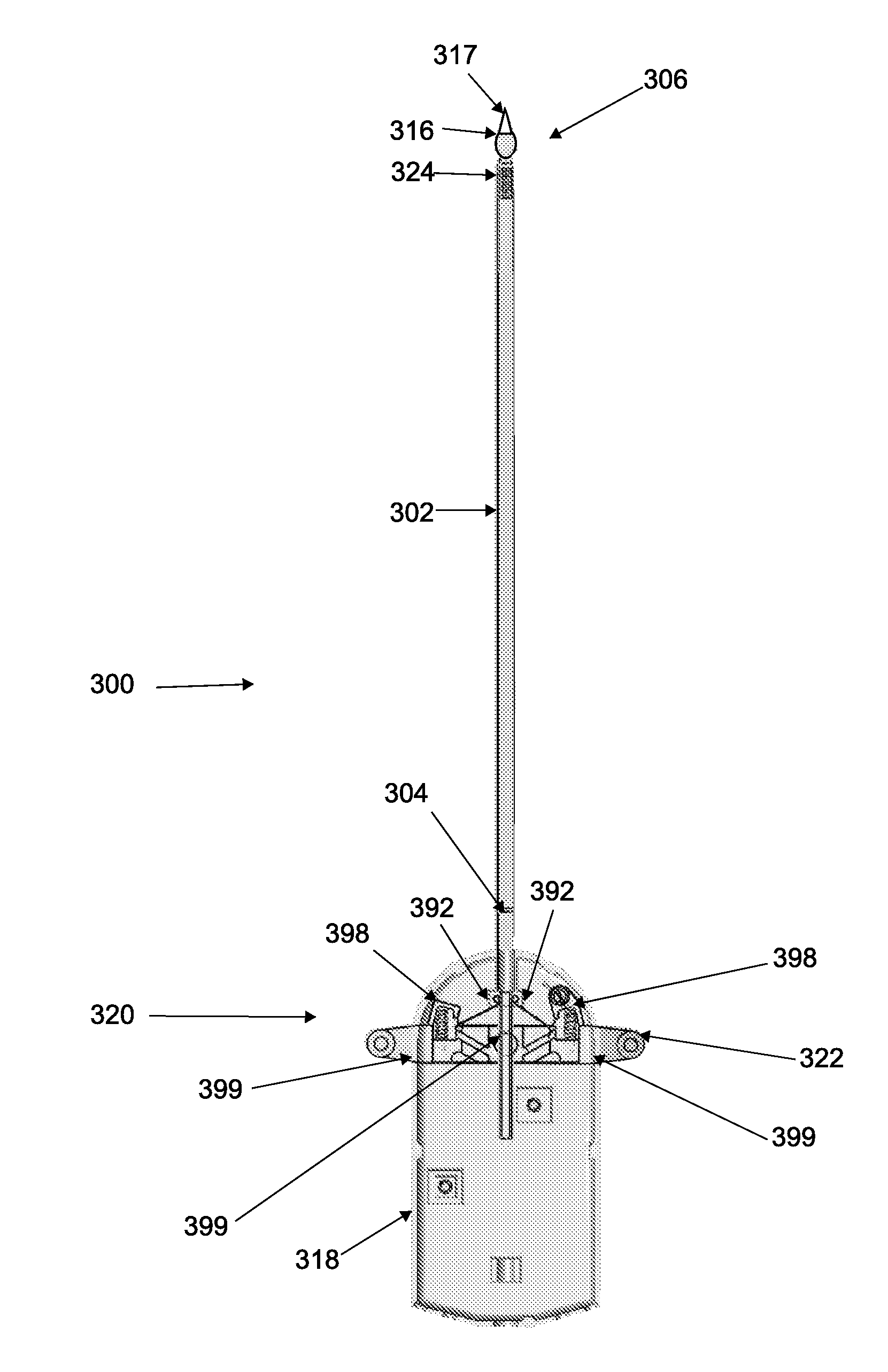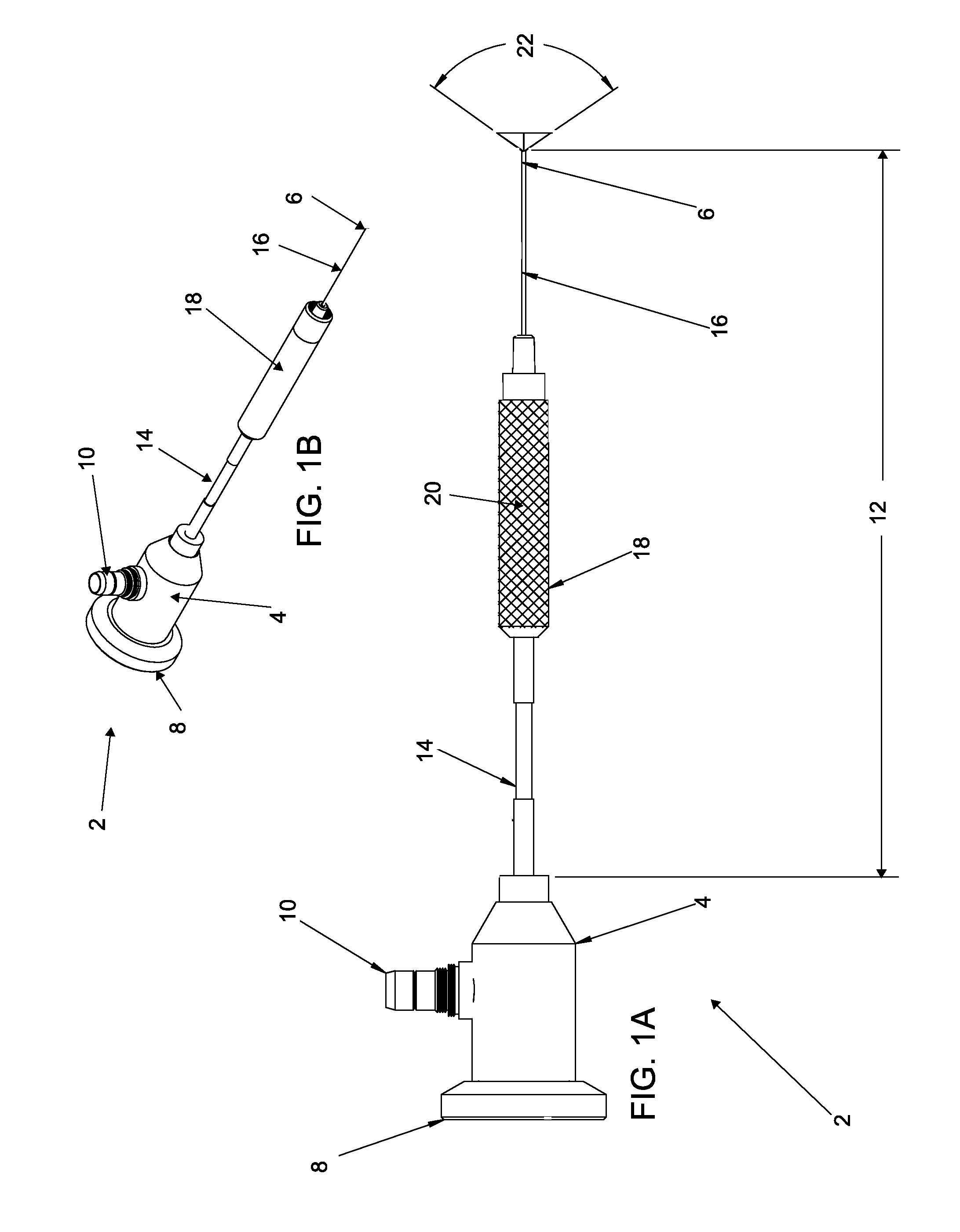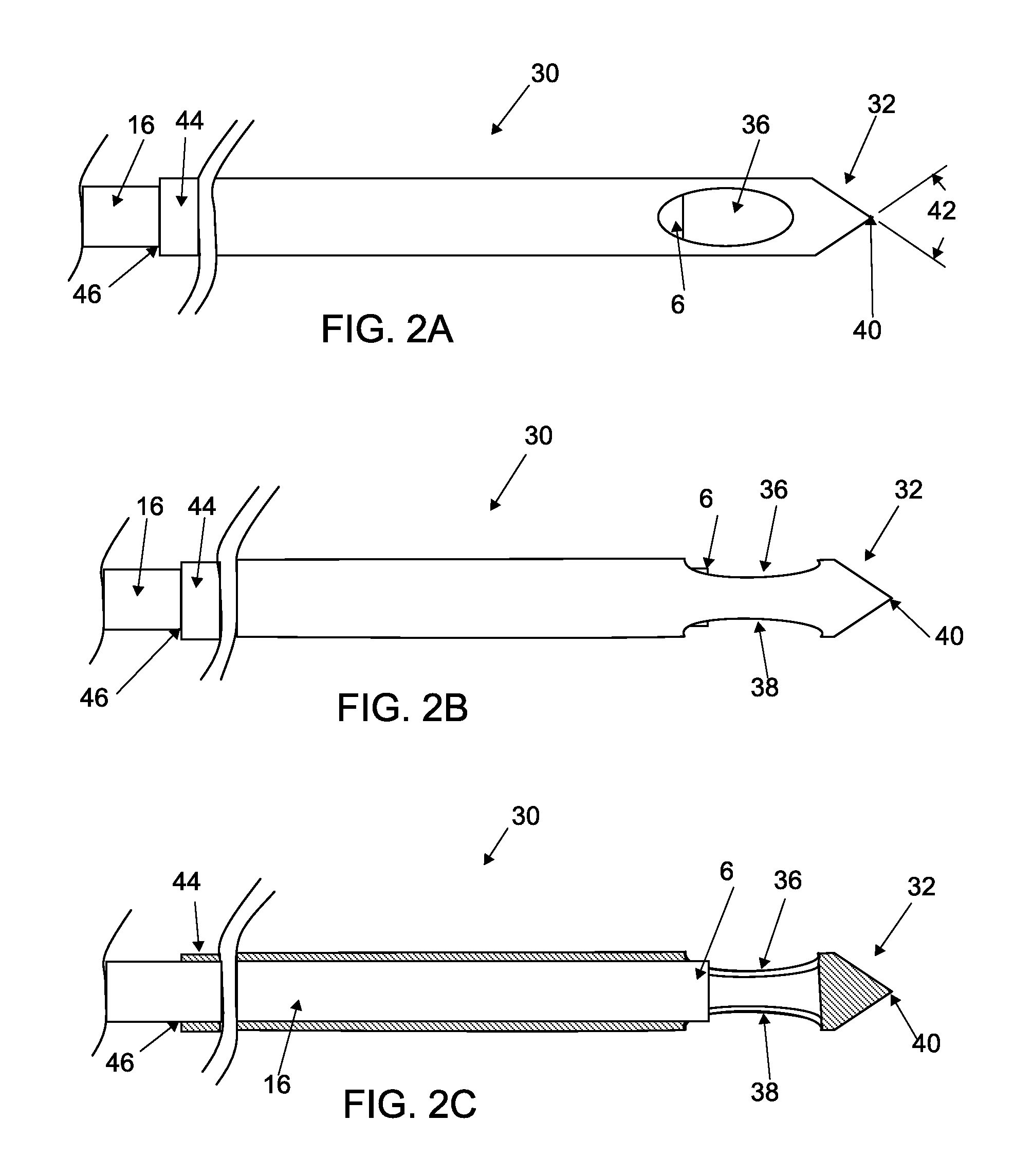Penetrating member with direct visualization
a technology of direct visualization and penetrating member, which is applied in the field of penetrating member with direct visualization, can solve the problems of lack of real-time visualization capabilities, lack of surgical instruments providing tactile sensation or allowing, and not fully addressing the underlying pathologies
- Summary
- Abstract
- Description
- Claims
- Application Information
AI Technical Summary
Problems solved by technology
Method used
Image
Examples
Embodiment Construction
[0021]To reduce injury to the spine structures while preserving the strength of the bones, minimally invasive spinal procedure have been used to avoid excising native bone and / or dissection of surrounding native tissues. Existing minimally invasive spinal access procedures have been performed using both fluoroscopic guidance and endoscopic visualization. While existing spinal endoscopy systems provide direct vision capability to view the treatment area in the spine or other areas of the body once it is accessed, risks of iatrogenic injury to nerves and vessels, or difficulty localizing the target site, often persist with these systems. Similar risks and difficulties are associated with a number of other minimally invasive and limited access procedures, including but not limited to the placement of subclavian and internal jugular catheters, renal biopsies, liver biopsies, paracentesis, pleuracentesis, and femoral artery access, for example.
[0022]The source of these risks may lie with...
PUM
 Login to View More
Login to View More Abstract
Description
Claims
Application Information
 Login to View More
Login to View More - R&D
- Intellectual Property
- Life Sciences
- Materials
- Tech Scout
- Unparalleled Data Quality
- Higher Quality Content
- 60% Fewer Hallucinations
Browse by: Latest US Patents, China's latest patents, Technical Efficacy Thesaurus, Application Domain, Technology Topic, Popular Technical Reports.
© 2025 PatSnap. All rights reserved.Legal|Privacy policy|Modern Slavery Act Transparency Statement|Sitemap|About US| Contact US: help@patsnap.com



